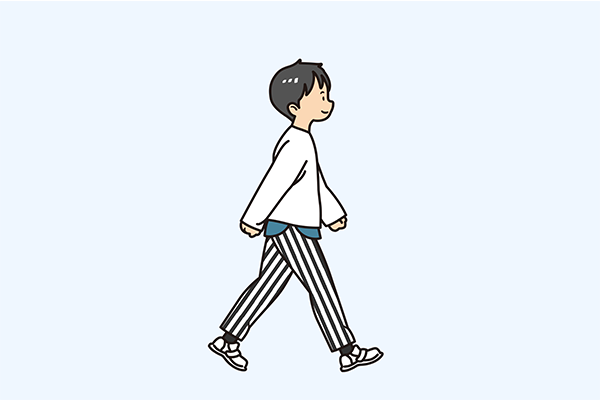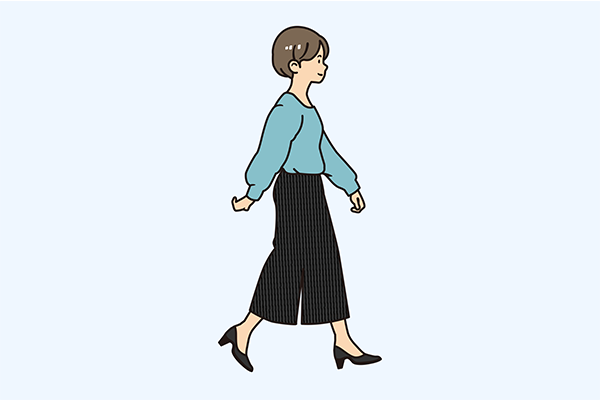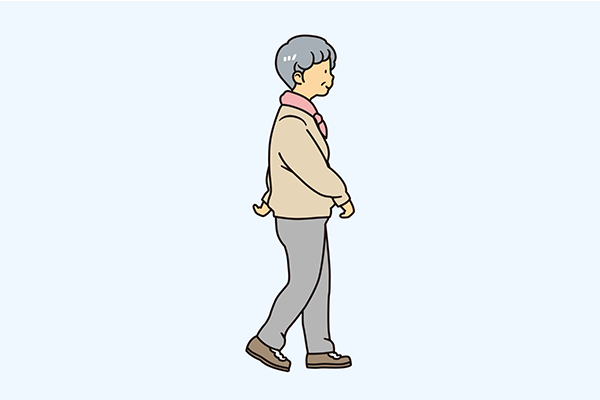Basic Bone Knowledge
Bones: Their Role and How they Work

The 5 important roles of bones in maintaining our health
Are you thinking about your bones?
While people make a habit to care for and exercise their muscles, our bones are deep inside our bodies and normally go unseen. Perhaps this is why many people go about their daily lives only thinking of their bones as the structure that supports their body.
However, our bones play several critical roles much more important than what you might be thinking.
Support the body
In terms of actual causes among people requiring support or nursing care, orthopedic disfunction ranks No. 1 among women and No. 3 among men.
Causes resulting in the need for support or nursing care
2. Dementia (13.8%)
3. Orthopedic disorder (12.1%)
2. Dementia (19.5%)
3. Age-related deterioration (13.9%)
*Orthopedic disorder: total for fractures, injuries by falls, joint ailments, and spinal injuries.
Source: Ministry of Health, Labour and Welfare 2019 Comprehensive Survey of Living Conditions
Act as the fulcrum for our movements

Protect the organs

Produce blood (blood cells)

Store calcium

Our bones have a metabolic cycle
Did you know that your bones have a metabolic cycle?
Our bones are not the same bones that grew larger since we were born with. Our bones are alive, and everyone’s bones are newly regenerated in roughly a three-year cycle. Let’s look at what makes up our bones and how our bones work to understand how this regeneration process occurs.
The composition of bones

Two reasons why bones have a metabolic cycle


How the metabolic cycle of bones works


What we can do for our bone health
Starting bone care in the growth period is important for our bone health
Because declining bone density and fractures are common themes among the elderly, many people think that bone health is a problem for the elderly. However, that is not true at all. Bone health during our growth period greatly influences the overall bone mass throughout our lifetime. Childbirth and some lifestyle habits can be a risk factor of bone mass reduction even for the youth.


Bone growth period
Bone development during the bone growth period forms the foundation of your bones for the rest of your life.
Research suggests that a person’s bone mass is highest at age 20 in males and at age 18 in females. This indicates that increasing peak bone mass during this bone growth period is the key to maintaining future bone health.

Bone maturation period
Around age 30 is when our bodies fully develop.
This is when bone mass is also at its highest. However, unhealthy diets, unbalanced eating habits, and excessive stress in recent years are increasing the risk of bone mass decline.
Also, pregnancy and breastfeeding during this period can cause a temporary decline in bone density, meaning that proactive bone care is critical.

Bone degeneration period
From our 40s, bone mass begins to decline gradually, and women in particular see a significant decline from their 50s onward. This is because, compared to men, women have a smaller skeletal structure, meaning less bone mass can be accumulated in the body. Furthermore, the decline in female hormones following menopause causes increased activity in osteoclasts, which work to degrade bone.
Keep bones healthy starting from your daily lifestyle!
Calcium intake is critical for maintaining and strengthening bone health.
Calcium is a difficult nutrition to absorb, and majority of what we consume leaves the body. First we should proactively take calcium through our diet. Then we should take measures, such as sunbathing, eating a balanced diet, and exercising appropriately, to improve our calcium absorption and adhesion.

Let us enjoy and actively live through the 100-year age by keeping our bone health through our daily lifestyle!
